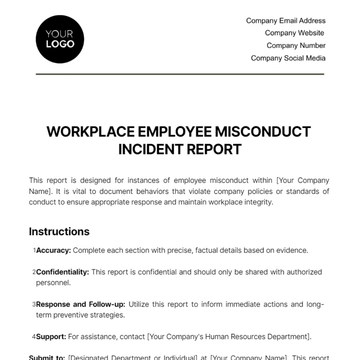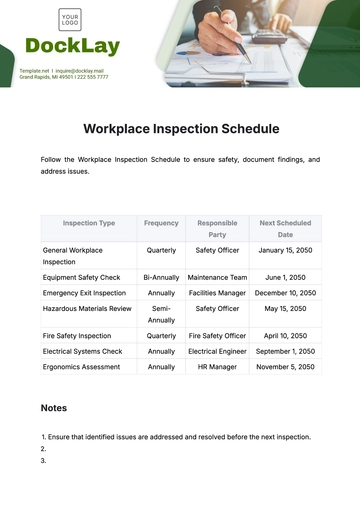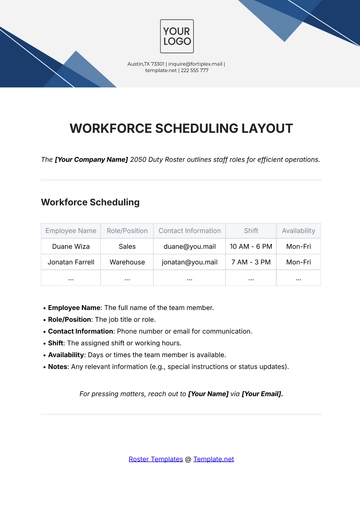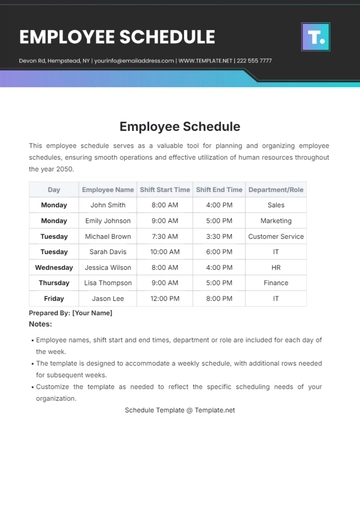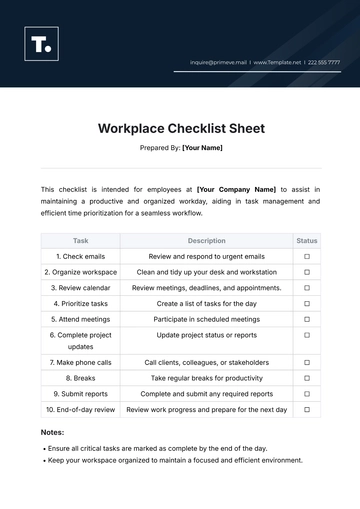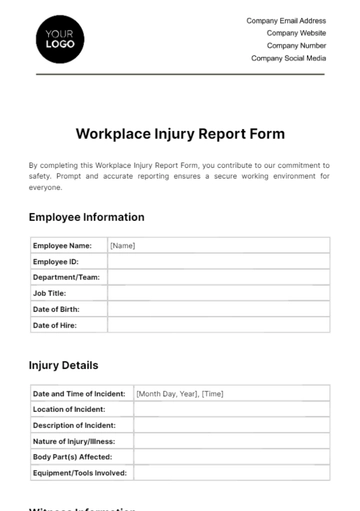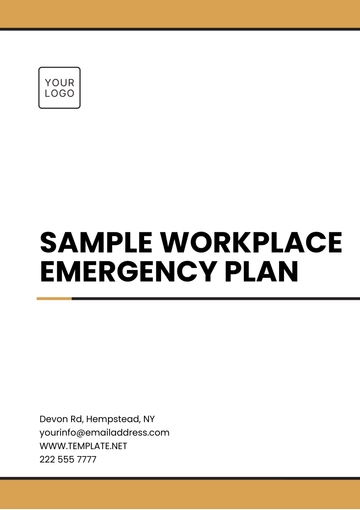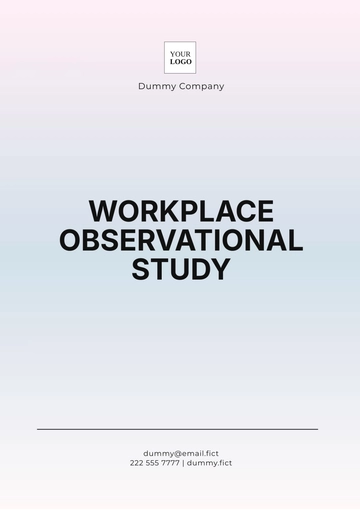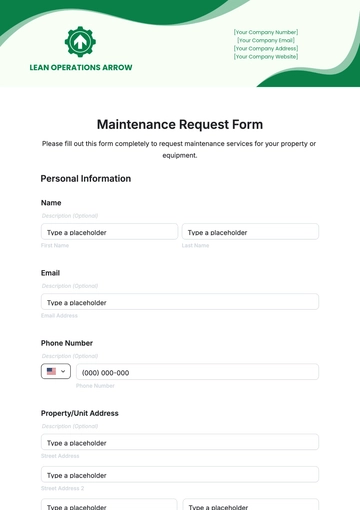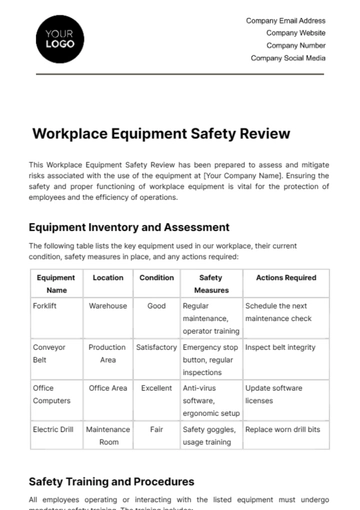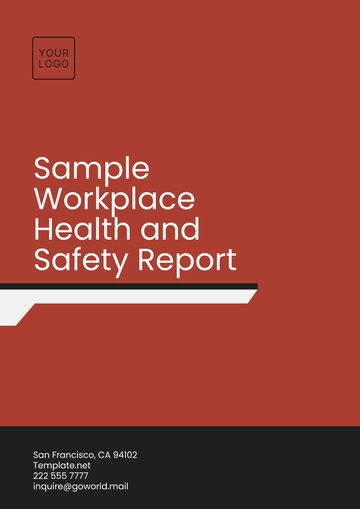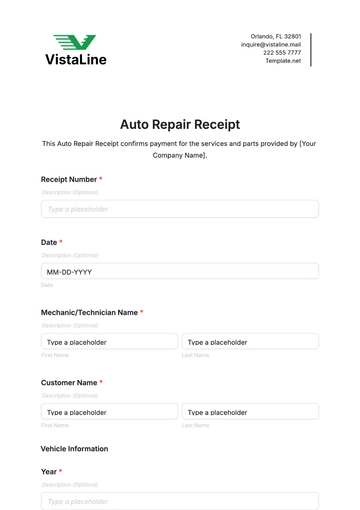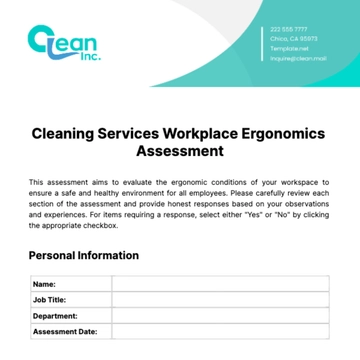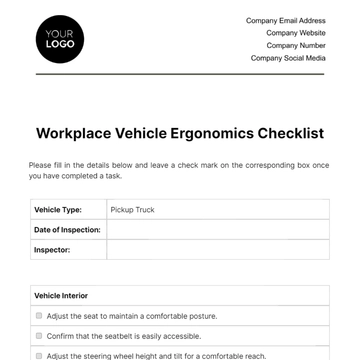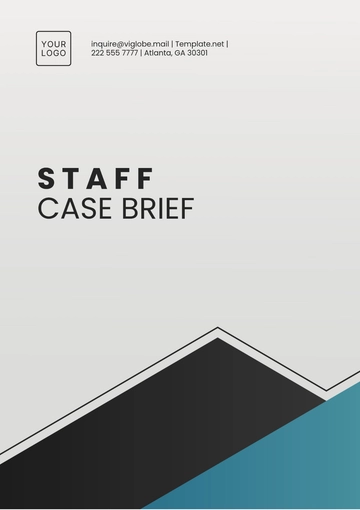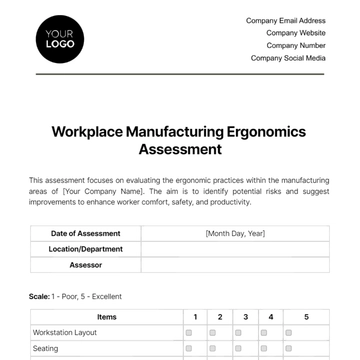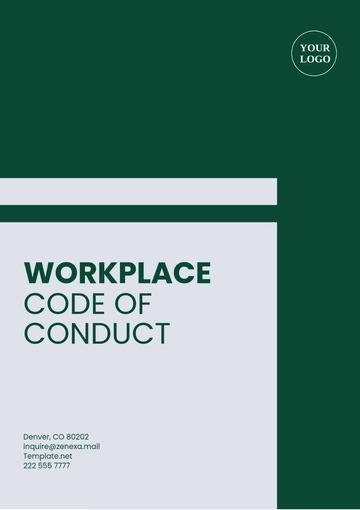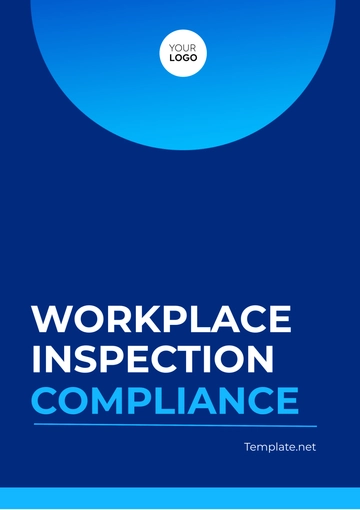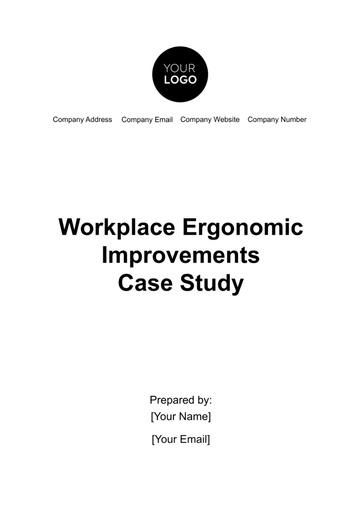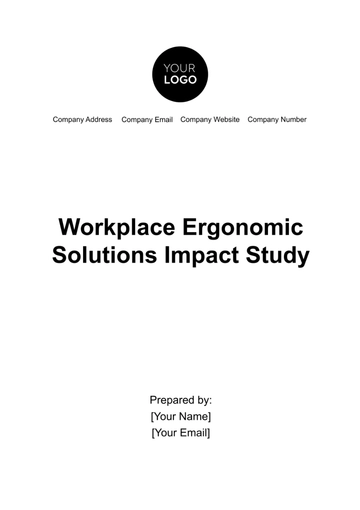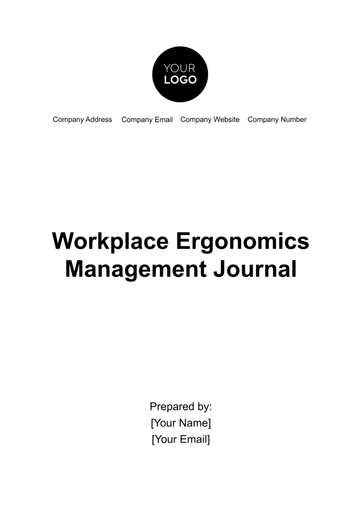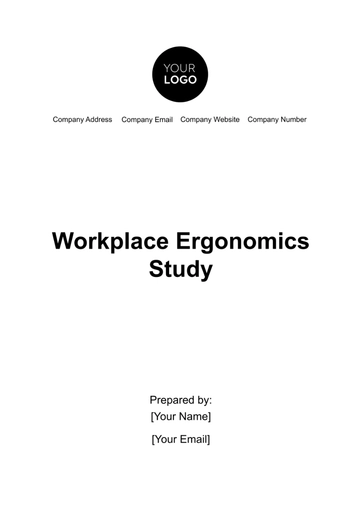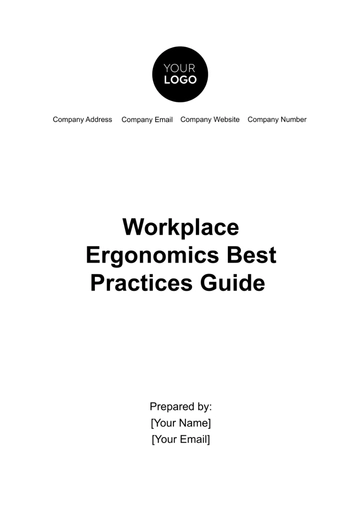Free Workplace Incident Guide
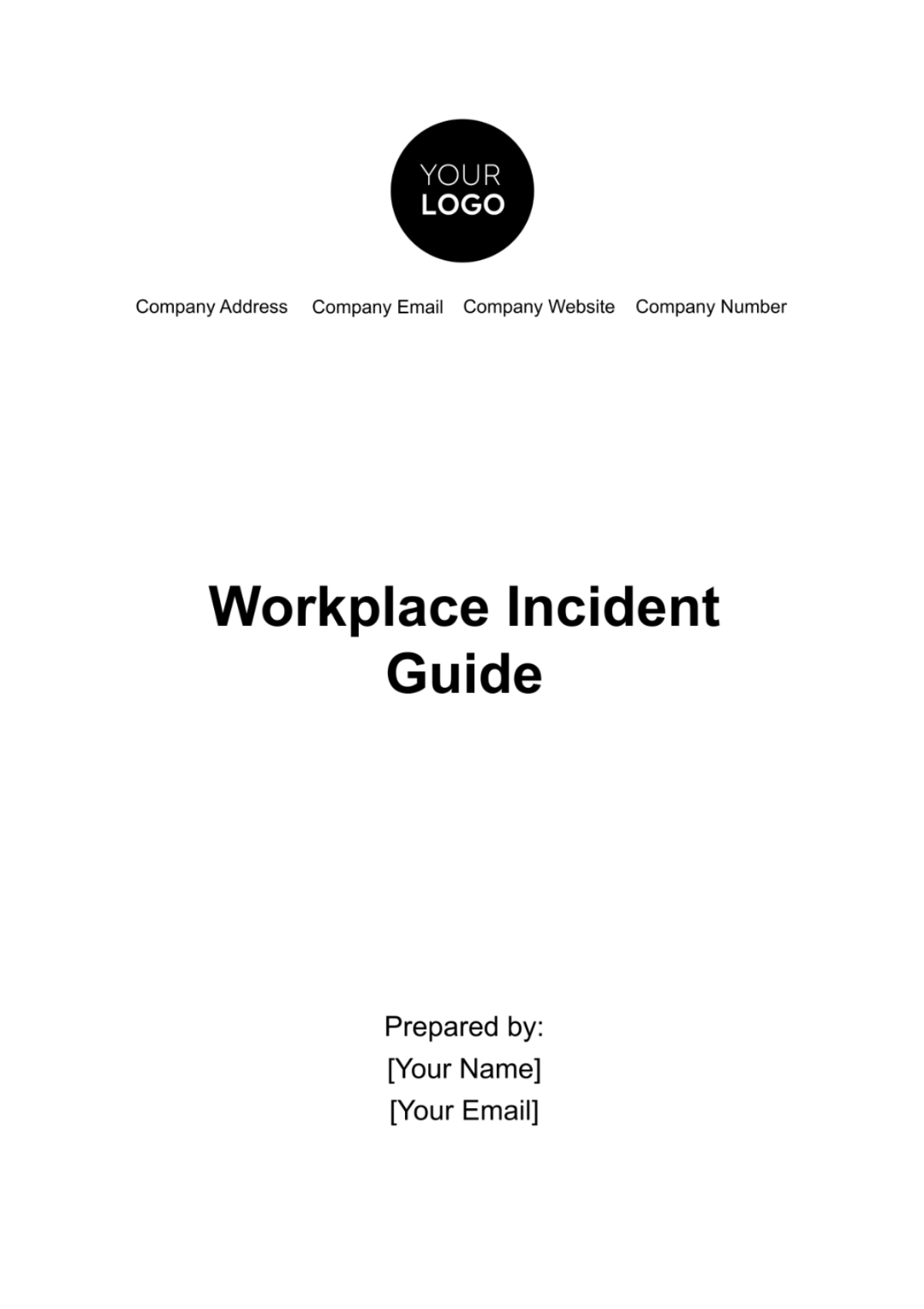
I. Introduction
This guide provides the steps for managing workplace incidents at [Your Company Name]. It aims to mitigate risks, ensure employee safety, and maintain operational continuity. Effective management of workplace incidents is crucial for maintaining a safe work environment. This guide serves as a starting point for handling incidents, promoting a culture of safety, and ensuring compliance with regulations.
II. Incident Reporting
Efficient and accurate incident reporting is the first critical step in responding to workplace incidents. This section details the process and essential elements required for effective reporting.
Immediate Notification:
As soon as an incident occurs, employees must immediately report it to their supervisor or designated safety officer. If the supervisor is unavailable, the next step is to contact the emergency response team.
Details to Gather:
The report should include the date and time of the incident, specific location within the workplace, a detailed description of what happened, and the names of any witnesses or injured parties. If immediate actions were taken, such as administering first aid, this should also be reported.
Reporting Channels:
The company should have multiple reporting channels, including direct phone lines, email, and an online incident reporting system. Ensure that all employees are aware of these channels and understand the importance of prompt reporting.
III. Incident Response
This section is pivotal in managing workplace incidents effectively. It encompasses structured steps and clearly defined responsibilities to ensure prompt and efficient action.
A. First Response
The first priority is to ensure the safety of all personnel. This may involve evacuating the area, isolating any hazards, and providing immediate medical attention to the injured.
Step | Responsibility | Description |
Assess the Situation | On-site Staff/First Responders | Quickly evaluate the nature of the incident and potential risks to personnel. |
Secure the Area | Safety Officer | Ensure the area is safe for entry or initiate evacuation if necessary. |
Provide Immediate Medical Attention | First Aid Trained Personnel | Administer first aid to injured individuals and call for medical assistance. |
Notify Relevant Authorities | Supervisor/Safety Officer | Contact emergency services or internal response teams. |
B. Containment and Control
Once the immediate risks are managed, the focus shifts to containing the situation to prevent further damage or injury. This includes securing the area, preserving the incident scene for investigation, and implementing temporary measures to ensure ongoing safety.
Step | Responsibility | Description |
Isolate Hazards | Safety Team | Identify and isolate any ongoing hazards to prevent further risk. |
Preserve Incident Scene | Security/Safety Officer | Secure the area to maintain the integrity of the scene for investigation. |
Implement Temporary Safety Measures | Safety Team | Put in place temporary controls to ensure ongoing safety in the area. |
C. Communication Protocol
Clear communication during an incident is vital. This includes informing all relevant parties about the incident and the measures being taken. An internal communication plan should outline who needs to be informed, such as management, the health and safety team, and all employees.
Step | Responsibility | Description |
Initial Internal Notification | Supervisor/Safety Officer | Inform management and relevant departments about the incident. |
Ongoing Updates | Communications Team | Provide regular updates to staff on the status of the incident and actions taken. |
External Communication | Public Relations/ Communications Team | Manage communication with external parties, including media and stakeholders. |
IV. Medical and Emergency Services
Immediate access to medical assistance and coordination with emergency services is a critical aspect of incident response. This section outlines essential contact information, first aid procedures, and post-incident medical care protocols, presented in an organized table format.
A. Emergency Contact Information
Ensure that all employees know how to contact emergency services and are aware of the location of first aid kits and medical facilities within the workplace.
Type of Emergency Service | Contact Information | Location/Access Details |
Internal Medical Team | [Number] | [Address] |
Local Emergency Services | ||
Nearest Hospital |
B. Administering First Aid
Employees trained in first aid should provide immediate assistance until professional medical help arrives. First aid responders must know their responsibilities and limitations.
First Aid Step | Responsible Personnel | Details |
Immediate Injury Assessment | Trained First Aid Staff | Assess the severity of injuries and provide immediate care. |
Basic First Aid Administration | Trained First Aid Staff | Perform basic first aid procedures such as wound dressing, CPR, etc. |
Coordination for Advanced Care | Supervisor/Safety Officer | Contact professional medical services for severe cases. |
C. Post-Incident Medical Care
Develop procedures for ongoing medical care, including transportation to medical facilities if necessary. Also, ensure that a system is in place for recording and reporting any medical treatment given.
Post - Incident Step | Responsibility | Details |
Transportation to Medical Facility | Supervisor/Safety Officer | Arrange for transportation of injured personnel to the nearest medical facility. |
Medical Care Follow-Up | Human Resources/Health and Safety Team | Coordinate with medical facilities for ongoing treatment and recovery updates. |
Incident Medical Reporting | Human Resources/Health and Safety Team | Document and report the incident and any medical care provided to the relevant authorities and insurance providers. |
V. Incident Investigation
Conducting a comprehensive investigation is vital to understanding the causes of an incident and preventing future occurrences. This section provides a structured methodology for the investigation process, from team formation to follow-up actions, presented in a detailed format.
A. Formation of Investigation Team
An investigation team, led by a safety officer and including relevant experts, should be formed immediately after the incident. This team is responsible for collecting evidence, interviewing witnesses, and examining the incident site.
Step | Responsibility | Description |
Team Assembly | Safety Officer | Form a team comprising a safety officer, relevant department heads, and external experts if needed. |
Defining Roles and Responsibilities | Safety Officer | Assign specific roles within the team, such as lead investigator, data analyst, and logistics coordinator. |
Initial Briefing | Safety Officer | Conduct an initial briefing to discuss the known facts of the incident. |
B. Analysis and Reporting
The team should analyze all collected data to determine the root causes of the incident. A detailed report, including findings and recommendations for future prevention, should be prepared.
Investigatiion Phase | Task | Details |
Evidence Collection | Investigation Team | Gather physical evidence, take photographs, and secure any relevant equipment or materials for analysis. |
Witness Interviews | Lead Investigator | Conduct interviews with witnesses, affected employees, and other relevant personnel to gather firsthand accounts. |
Data Analysis and Root Cause Identification | Data Analyst | Analyze all collected information to identify the root causes of the incident. |
Report Preparation | Investigation Team | Compile a comprehensive report detailing the investigation findings, root causes, and actionable recommendations. |
C. Follow-up Actions
Ensure that the recommendations from the investigation report are implemented. This may involve changes to safety protocols, equipment, or training programs. Regular follow-up should be conducted to assess the effectiveness of these changes.
Step | Responsibility | Description |
Review of Investigation Findings | Management and Safety Team | Present the investigation report. |
Implementation of Recommendations | Department Heads | Implement the suggested changes. |
Monitoring and Review | Safety Officer | Regularly monitor the effectiveness of implemented changes and conduct periodic reviews. |
VI. Legal and Compliance Considerations
Adhering to legal and regulatory requirements is a pivotal aspect of incident management. This section outlines the necessary steps for ensuring legal compliance, maintaining appropriate documentation, and reviewing organizational procedures in line with legal standards.
A. Reporting to Authorities
Some incidents may require reporting to external authorities, such as occupational health and safety agencies. Understand and comply with these legal reporting obligations.
Assess Incident: Determine if the incident falls under reportable criteria set by occupational health and safety agencies.
Notify Relevant Authorities: Report the incident to the appropriate external authorities within the stipulated time frame, typically [24-48 hours] post-incident.
Follow Reporting Protocols: Ensure that the report includes all necessary details as required by the regulatory agencies, such as the nature of the incident, involved parties, and immediate actions taken.
B. Documentation and Record Keeping
Maintain detailed records of the incident, including reports, witness statements, and outcomes of the investigation. These documents are crucial for legal and compliance purposes.
Record Incident Details: Create a comprehensive report of the incident, including time, location, affected individuals, and description of the event.
Collect Firsthand Accounts: Gather and document statements from witnesses and individuals involved in the incident.
Record Outcomes of Investigation: Document the findings and conclusions of the incident investigation, including identified root causes and contributing factors.
C. Review of Compliance Procedures
Post-incident, review all relevant compliance procedures and safety protocols to ensure they meet legal standards and industry best practices.
Evaluate and Update: Review current safety protocols in light of the incident to ensure they align with legal standards and best practices.
Assess and Revise: Examine existing training programs for adequacy and make necessary adjustments to enhance compliance and safety awareness.
Implement Changes: Apply lessons learned from the incident to continuously improve safety procedures and compliance measures.
- 100% Customizable, free editor
- Access 1 Million+ Templates, photo’s & graphics
- Download or share as a template
- Click and replace photos, graphics, text, backgrounds
- Resize, crop, AI write & more
- Access advanced editor
Introducing the Workplace Incident Guide Template from Template.net. Crafted by experts, this editable and customizable template offers a comprehensive solution for documenting workplace incidents. With our intuitive Ai Editor Tool, effortlessly tailor the guide to your company's needs. Simplify incident reporting and ensure workplace safety with ease.
